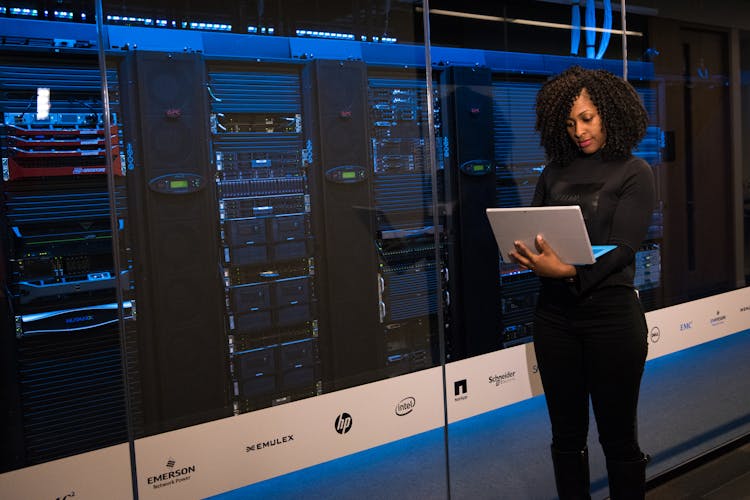[ad_1]
Nondestructive Testing (NDT) has long been a crucial aspect of quality assurance in structures and materials across various industries. Traditionally, NDT relied heavily on manual inspection techniques and human expertise, but the process has undergone a transformative evolution with the advent of AI and machine learning (ML). These advancements have ushered in a paradigm shift in the effectiveness of non-invasive inspections.
How Is AI Used in NDT?
The integration of AI technology in the NDT process is expected to play a critical role in advancing the market toward a $16.83 billion valuation by 2033. AI and ML are augmenting human capabilities and advanced data analysis, paving the way for safer and more reliable NDT processes in the following ways.
Using AI to Enhance Pattern Recognition
Advanced AI algorithms trained on large enough datasets can find various patterns and provide detailed insights into the condition of materials. This integration enhances the efficiency and accuracy of NDT procedures. For example, AI-powered image processing can identify patterns and subtle anomalies that may be invisible to the human eye.
Automated Defect Detection
AI provides a viable framework for automatically detecting specific defects like corrosion and deposits by analyzing test images. The AI system can compare the images captured during testing and identify corresponding disparities in the product or structure. Moreover, this approach can be fully automated, eliminating the need for the inspector to review each image manually.
Using AI to standardize this visual inspection process also frees technicians to focus on more important work while reducing the training required for testing product defects. More importantly, automation minimizes the Probability of Detection fallout associated with human error.
Retroactive Inspections Insights
AI can facilitate streamlined retroactive inspections for improved quality assurance purposes. For example, trained models can analyze past inspection data and identify trends that previously caused bottlenecks in testing processes.
By leveraging historical data, AI-enabled systems provide more comprehensive visibility into the end-to-end product manufacturing process and pinpoint areas requiring more attention for efficient output.
Real-Time NDT With IoT
Interconnected smart sensors and advanced imaging devices make it possible to inspect and view results in real time. When integrated into digital imaging techniques like computed tomography and digital radiography, IoT systems enable more precise testing of internal structures.
AI algorithms’ predictive analytic capabilities also help anticipate potential failures. IoT sensors continuously monitor a machine’s operational variables, providing real-time information regarding its performance. When these variables move outside a predefined safe operating range, the IoT systems automatically alert the on-site technician, allowing for proactive maintenance and risk mitigation.
Industry Applications
NDT is the preferred testing method across various industries, including automotive, aerospace, oil and gas exploration, and manufacturing. Integrating AI and ML into the mix heralds a new era of innovation aligned with the tenets of the Industry 4.0 revolution.
In automotive, AI-enabled NDT systems detect and report defects in welds and castings, ensuring the vehicle quality off the assembly line. In the oil and gas industry, IoT-based digital imaging devices enable remote monitoring of pipelines and offshore structures, helping operators detect potential defects and leaks after deployment.
Across manufacturing and related sectors, AI and ML are facilitating streamlined model creation and enhanced workflows. Where before, data scientists took hours to build their models, automated machine learning helps reduce the process to 15 minutes with comparable results.
In addition to saving time, AI-powered automation decreases manufacturing defects due to human factors like fatigue and oversights, reducing time spent on post-production testing.
Challenges and Considerations
The benefits of an AI-NDT collaboration are significant, but there are also challenges and considerations, such as the following:
- Data quality: As intelligent as AI algorithms are, the integrity and reliability of their output depend on the quality of the NDT data used to train the testing model. Inaccurate data leads to false inspection results with potentially devastating repercussions.
- Regulatory compliance: AI and ML technologies are relatively new, and the industry lacks a comprehensive standard regulatory framework. Navigating this field can be complex, especially for multinational corporations with overseas branches where AI regulations vary.
- Human expertise: Advanced AI models may automate several manual NDT tasks, but human discretion is still required to interpret testing results and make informed decisions. In most cases, this requires additional specialized training, adding to the complexity of the process.
- Ethical considerations: Data privacy and algorithm bias are ethical issues of general AI adoption. Accountability is particularly important in non-invasive testing. For instance, who is responsible when IoT systems transmit altered data, leading to compromised inspection results and subsequent faulty decision-making?
AI-Driven NDT in the Industry 4.0 Era
AI and automation technologies are transforming NDT, enhancing accuracy and faster, more reliable inspection times. AI-enabled NDT procedures can also improve predictive maintenance and provide actionable insights with unprecedented precision.
As digital technology advances, an AI-driven NDT will be fundamental to implementing a more robust Industry 4.0 framework across multiple industries.
Also Read Securing Digital Content: Mitigating Cybersecurity Risks in AI Content Marketing
[ad_2]
Source link



